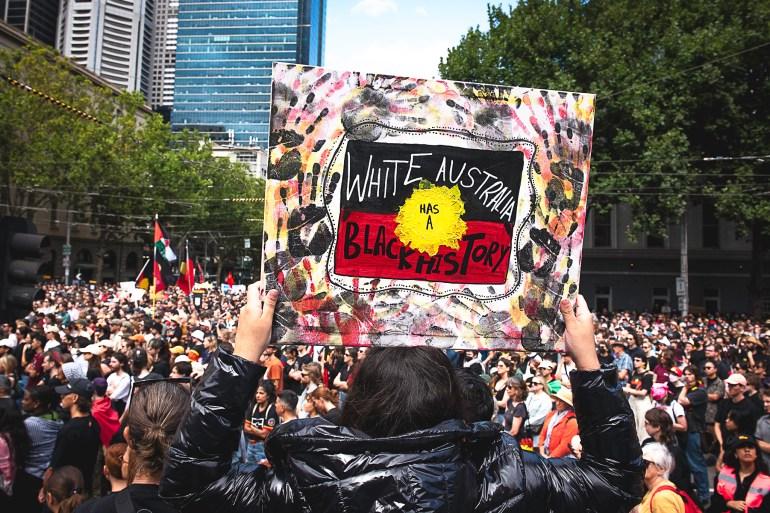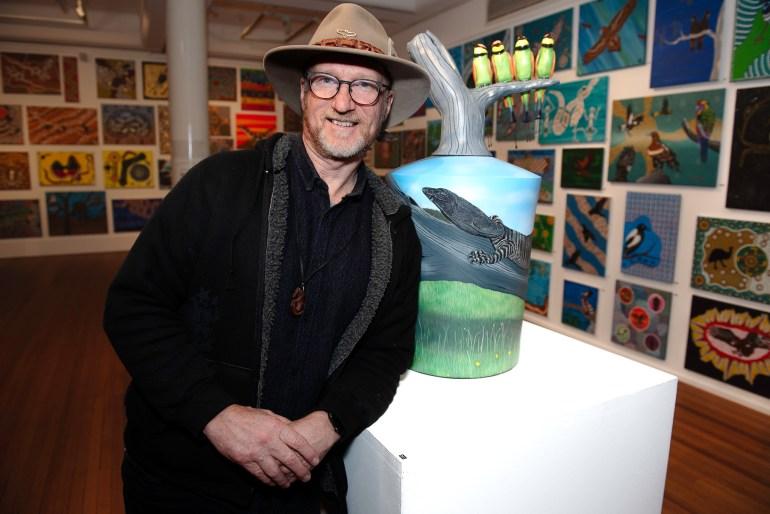Source: ALJAZEERA
ALJAZEERA MEDIA NETWORK

Indigenous Australians form a significant portion of the prison population, but The Torch is striving to change this by offering art and cultural programs.
Melbourne, Australia – Indigenous Australians face high incarceration rates, making them the most imprisoned group globally.
Despite constituting just 3.8 percent of Australia's population, Indigenous Australians account for 33 percent of the prison population, and are 17 times more likely to be imprisoned than non-Indigenous individuals.
In Victoria, a group of artists is working to change this cycle.
The Torch is a community-based organization that helps Indigenous inmates develop artistic skills and reconnect with their cultural heritage, while also generating income by selling their artwork. Funds are saved in a trust for their release.
This initiative has led to a significant reduction in recidivism rates among Indigenous participants, lowering it to 17 percent compared to the national average of over 70 percent.
“Before prison, I was in domestic violence and almost homeless,” said Stacey Edwards, a former inmate. “The Torch fund allowed me to put a deposit on a house, providing routine and structure to my life.”
The high incarceration rates of Indigenous people in Australia are a legacy of colonization and systemic racism, further fueled by governmental law-and-order policies. The trauma from the Stolen Generations—where Indigenous children were forcibly removed from their families—continues to impact the community.
In Victoria, where The Torch operates, nearly half of the Indigenous population has been affected by these assimilation policies, which were abolished in the 1970s.
Edwards, from the Taungurung and Boonwurrung nations, shares how generational trauma contributed to her fall into drug use and imprisonment.
Growing up in a disadvantaged neighborhood, Stacey witnessed her grandfather being taken away to white-run institutions, deeply affecting her family dynamics.
“My mother struggled with addiction, and this affected her parenting," Stacey explained, indicating how intergenerational trauma played a role in her struggles.
 A woman at a rally holding a placard reading "White Australia has a Black History" on an Indigenous flag surrounded by black handprints.
A woman at a rally holding a placard reading "White Australia has a Black History" on an Indigenous flag surrounded by black handprints.
Indigenous women, many of whom are mothers, are the fastest-growing group of prisoners in Australia, largely due to domestic violence and homelessness.
The economic benefits of The Torch, which provides funds for released inmates, help in breaking this cycle.
Indigenous Australians originate from over 500 nations in Australia, which was colonized by the British in 1788, leading to widespread inequality and systemic issues that contribute to high imprisonment rates.
Kent Morris, from the Barkindji nation, was a founding member of The Torch in 2011. He emphasized the program's success in economically supporting artists while they are in prison.
"The program was designed to help inmates translate their artistic skills into some economic support to prevent re-incarceration," Morris explained.
Inmates in Australia can earn some income through prison programs, but The Torch's unique model allows them to sell their artwork outside prison walls.
In 2023, over 1 million Australian dollars ($665,785) was earned by participants through art sales, with funds either saved or used for family support.
Roey, a former prisoner from the Warumungu and Yawuru Nations, shared how The Torch helped him support his children while incarcerated.
“Supporting my kids while being in prison was one of my greatest achievements,” he reflected.
 Sean Miller stands in front of a ceramic artwork, dressed in a black shirt, coat, and hat.
Sean Miller stands in front of a ceramic artwork, dressed in a black shirt, coat, and hat.
The Torch also reconnects artists with their cultural heritage, often disrupted by colonization.
Sean Miller, from the Gamileroi nation, found a sense of identity through The Torch.
“Learning about my culture was something inherent in me, and The Torch provided that opportunity,” Miller said. He has since exhibited nationally and works with The Torch to help other inmates.
“Seeing an ex-prisoner like me representing The Torch gave other inmates hope and comfort,” he added.
Despite its success, The Torch operates only in Victoria and is not federally funded, relying on philanthropic and state grants.
Government policies, such as Queensland's decision to imprison Indigenous children in adult jails, worsen the incarceration crisis. Thalia Anthony, a criminologist, attributes this to state policies rather than higher crime rates.
Data from the Australian Bureau of Statistics shows a significant rise in Indigenous imprisonment from 2,798 in 1994 to 13,039 in 2021, with over 550 Indigenous deaths in custody over this period.
Josh Kerr, a former Torch participant, died in Victoria’s Port Phillip Prison. His artwork was displayed during the inquest into his death, highlighting his talent and cultural connection.
Minister for Indigenous Australians Linda Burney acknowledged the ongoing issue of deaths in custody and emphasized the need to reduce Indigenous incarceration rates.
The Australian government’s recent budget includes justice reinvestment strategies aimed at addressing the root causes of criminal behavior.
UTS criminologist Anthony advocates for policy changes to see prison as a last resort, emphasizing the need for alternative solutions.
Kent Morris hopes for national expansion of programs like The Torch, emphasizing the need to unlock the potential within the Indigenous community.
Editor's note: Details about crimes and sentences have been omitted upon request to protect interviewees' privacy.
Your email address will not be published. Required fields are marked *